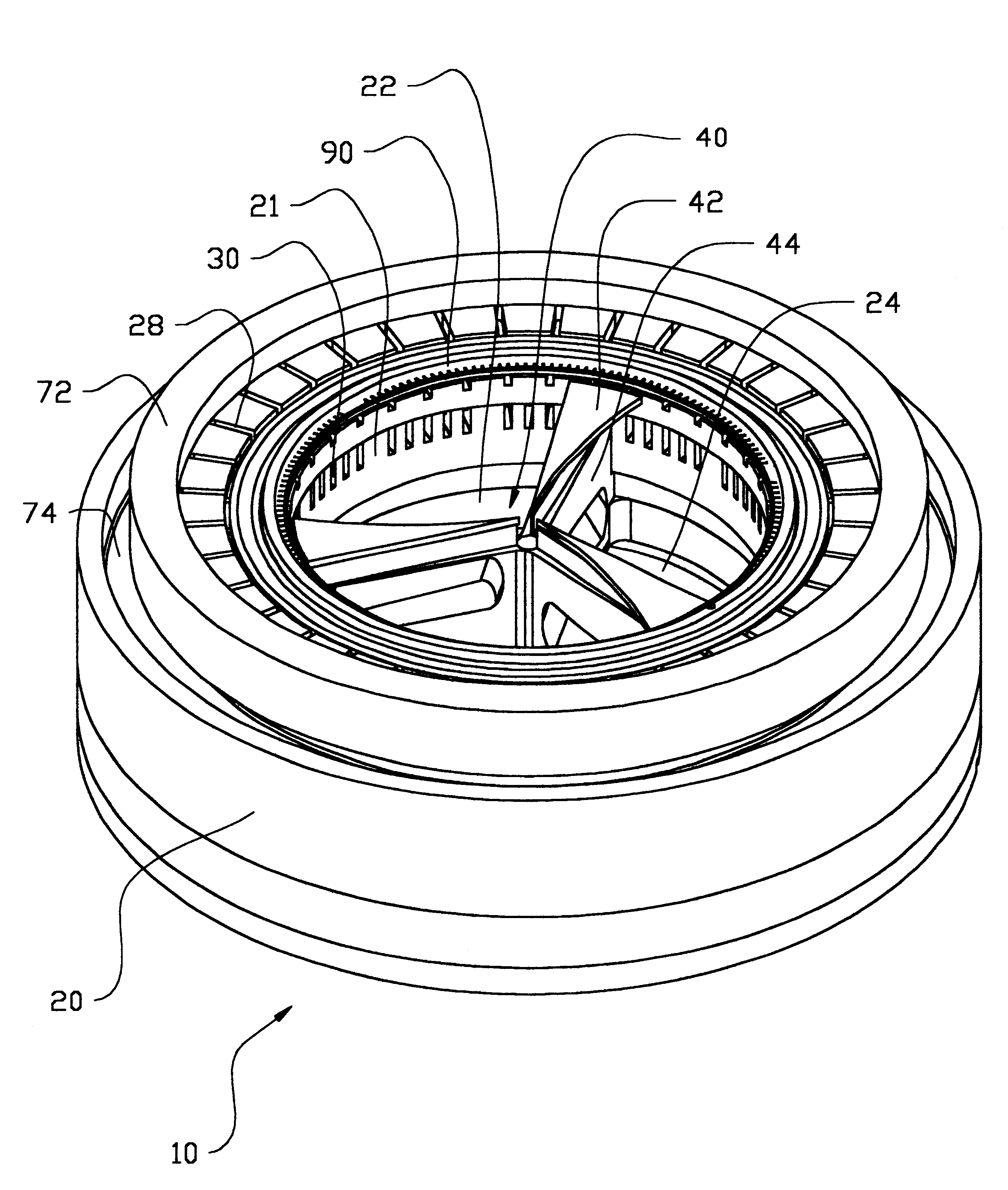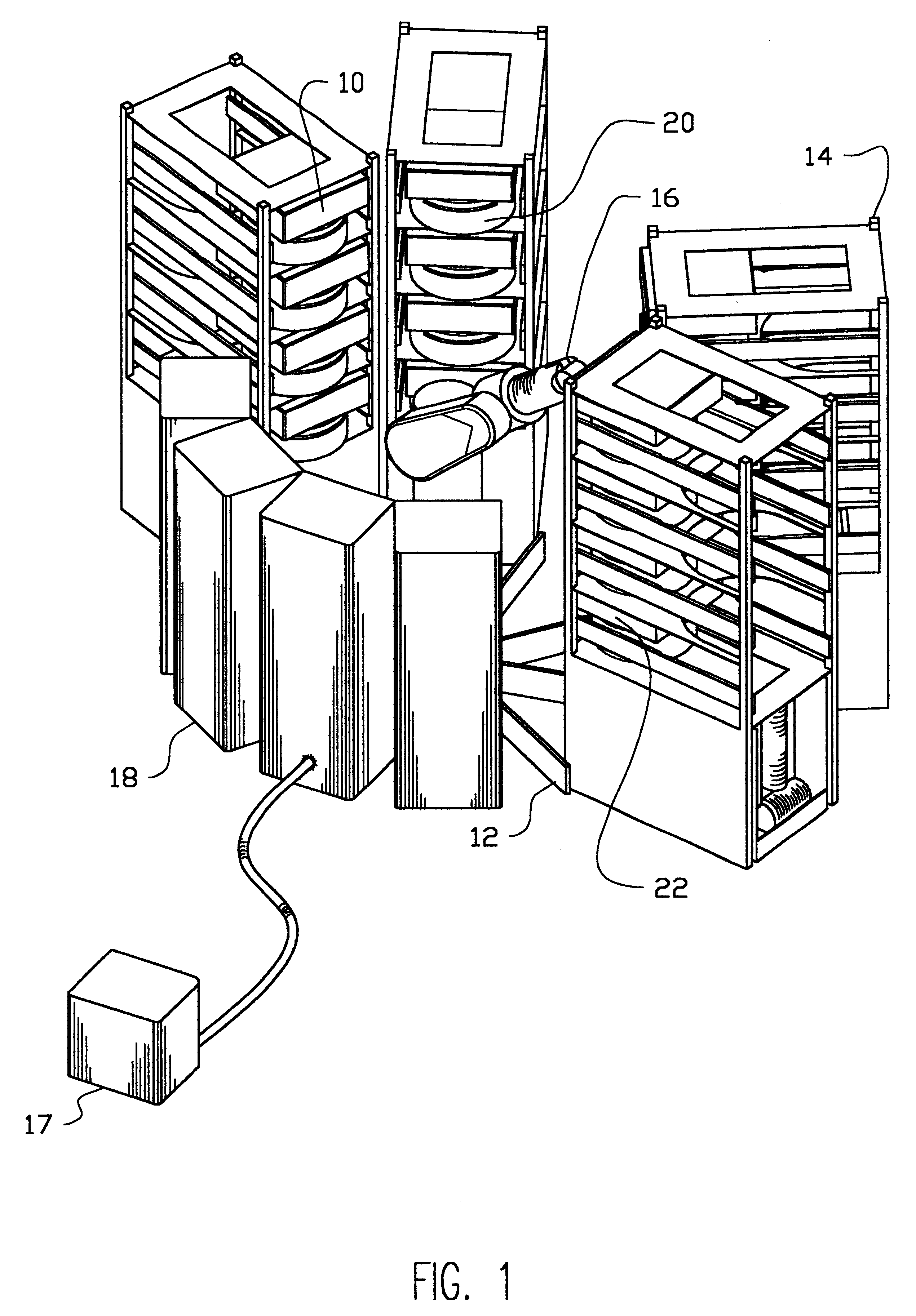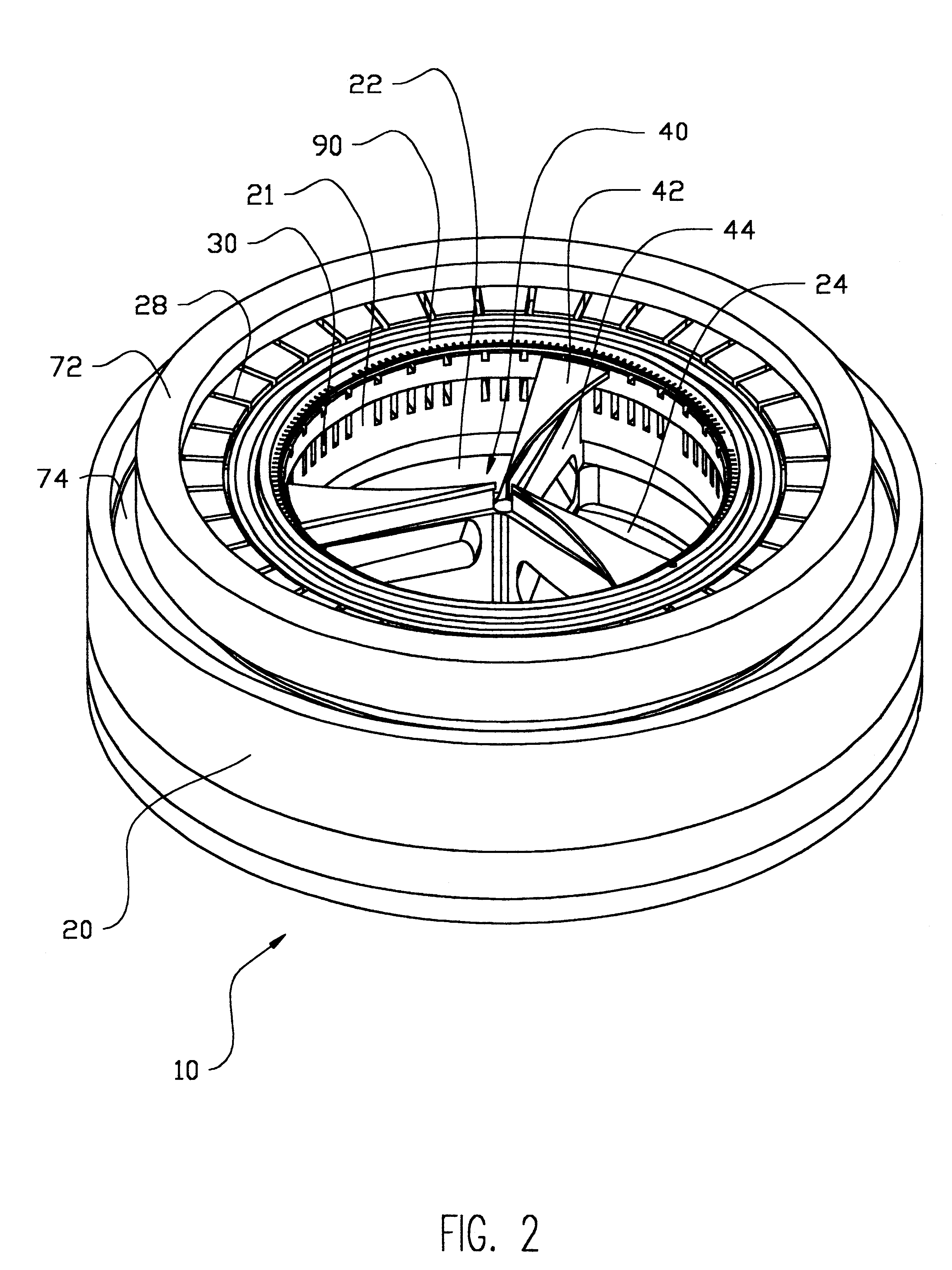Method of and apparatus for controlling fluid flow and electric fields involved in the electroplating of substantially flat workpieces and the like and more generally controlling fluid flow in the processing of other work piece surfaces as well
a technology of fluid flow and electric field, which is applied in the direction of electric circuits, manufacturing tools, coatings, etc., can solve the problems of uneven fluid distribution in the electroplating chamber, difficult to design equipment capable of producing substantially uniform metal films, and thicker plated deposits near the outer edge of the workpiece, etc., to achieve tighter packing of process chambers, increase the workpiece throughput per cluster tool, and improve the effect of capital utilization
- Summary
- Abstract
- Description
- Claims
- Application Information
AI Technical Summary
Benefits of technology
Problems solved by technology
Method used
Image
Examples
Embodiment Construction
Referring to FIG. 1, the invention, as applied to the illustrative and important field of electroplating and the like, embodies a plurality of stacks of similar electroplating process chamber modules 10 that can be readily configured into an automated wafer processing cluster tool 12. In the embodiment shown, a plurality of vertically stacked process module frames 14 support the corresponding plurality of stacks of process modules 10. Externally visible are each of the process chamber bodies 20, more particularly shown on an enlarged scale in FIG. 2, and the process module cover 22. The process module frames 14 circumferentially surround the wafer handling robot 16 of well-known type such that the robot is able to insert wafers horizontally into and retrieve wafers horizontally from all process modules. A suitable wafer-handling robot for the purposes of this invention may, for example, be the Staubli Unimation RX-90 for this preferred embodiment of the invention. A conventional clu...
PUM
| Property | Measurement | Unit |
|---|---|---|
| Thickness | aaaaa | aaaaa |
| Angle | aaaaa | aaaaa |
| Flow rate | aaaaa | aaaaa |
Abstract
Description
Claims
Application Information
 Login to View More
Login to View More - R&D
- Intellectual Property
- Life Sciences
- Materials
- Tech Scout
- Unparalleled Data Quality
- Higher Quality Content
- 60% Fewer Hallucinations
Browse by: Latest US Patents, China's latest patents, Technical Efficacy Thesaurus, Application Domain, Technology Topic, Popular Technical Reports.
© 2025 PatSnap. All rights reserved.Legal|Privacy policy|Modern Slavery Act Transparency Statement|Sitemap|About US| Contact US: help@patsnap.com



